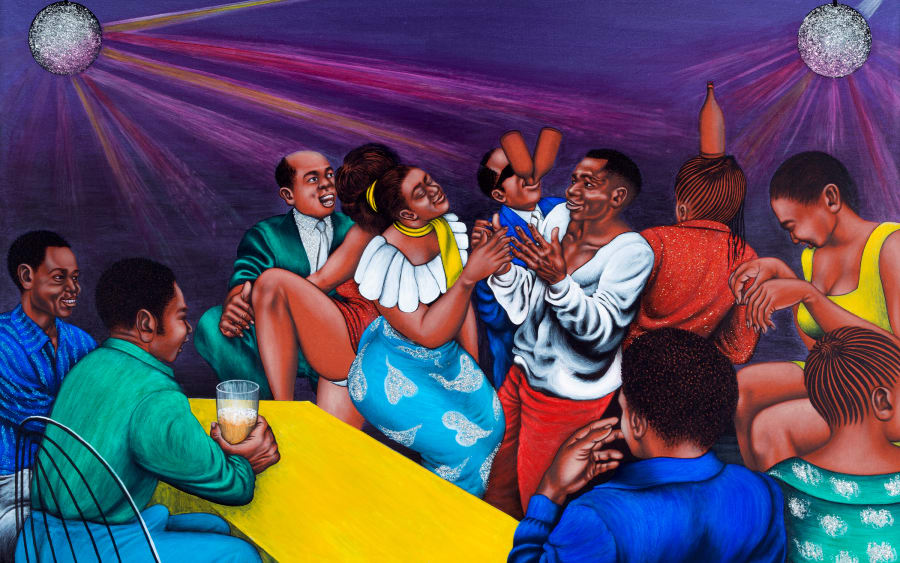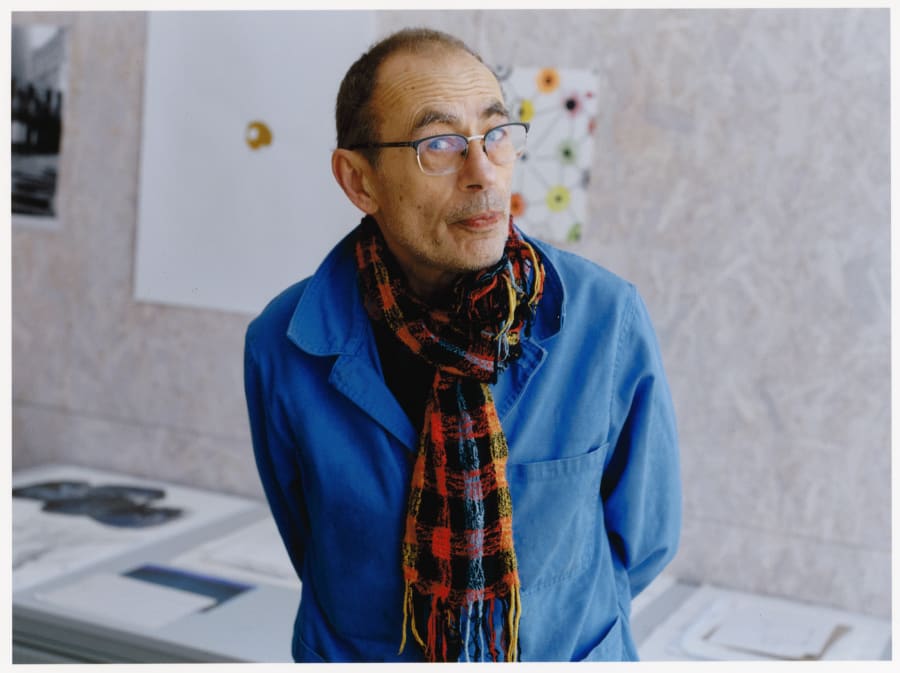‘I became an artist by accident. There was no art background in my family. When I came to France, I was 4 years old, and I didn’t speak the language. I started drawing very early on, and it became a refuge for me and a way to communicate with others. I used to copy a lot of the cartoons that aired on [the French kids' TV show] Club Dorothée, and that helped me score some points with my schoolmates.
‘I didn’t really know what art was back then. In high school, I started hanging out with some friends who did graffiti. There was a real collective dynamic back then – something I still carry with me today – and I also experimented with dance and rap music, which was booming at the time. Later, I trained to become a layout artist, and as part of the course, we had still-life classes as well as museum visits that were educational.
‘Then I discovered photography. I met the photographer Anoushka Shoot when she was studying at Beaux-Arts de Paris and realized my first photographic series with her, Nous sommes Halles [2002-2003]. I had been playing around with photography before but without a real intent. The work of Jamel Shabazz also had a strong influence on my relationship to photography and allowed me to look differently at my surroundings and the reality I grew up in.
‘While a student at the École des Arts Décoratifs, I had the chance to meet teachers such as Florence Paradeis and Christian Courrèges, who taught me photography and its technique, and someone like Jean-Luc Moulène, who helped me envision photography as a conceptual object. It was around that time that I started the Périphérique series, which I had the opportunity to show at a photo festival in China. The series was very well received: I had my first articles in the French press and I was put in touch with the Les filles du calvaire gallery in Paris. This is when things started falling into place financially.
‘Later, I was keen to get back to studying because I felt I needed that space to refocus and experiment, and I was accepted at Le Fresnoy [a new media art school in the north of France]. This is where I created my first video work, Temps mort [2009]. The film is about the encounter between two people, one on the inside – in prison – and the other on the outside, but it’s mostly a story about a human experience. This work was presented at the Berlin Biennale in 2010 and got me invited to the 2011 Venice Biennale. As with Périphérique, people would see images, but I was more interested in the human component behind each of them – that process of going out on the field, building trust, and allowing people to represent themselves.
‘In 2013, I discovered the work of photographer and video artist Martha Camarillo and I went and made a body of work with a group of Black riders in Philadelphia. We all grew up with westerns, but I realized how much the image of the cowboy in the collective imagination had been totally whitewashed by Hollywood. I wanted to make this other reality visible. But in a way, you’re always an outsider looking in, and this is something I wanted to show as well – that tension between an artist trying to make work and the reality he encounters.
‘In the last few years, I’ve become more and more interested in other life-forms and the environment. I became interested in gardens because of Bourlem Mohamed [a patient of psychoanalyst and writer Frantz Fanon] who was looking after the garden of the psychiatric hospital in Blida, my hometown in Algeria. I was struck by his unique way of thinking about what a garden is, how to structure it and bring it to life, but also by his therapeutic approach to plants, and I wanted to learn from him. In the first place I decided to recreate a garden the Bourlem Mohamed way for the Liverpool Biennial in 2018. With the sound installation Brutal Family Roots, which I presented at the Biennale of Sydney in 2020, I tried to translate the electric activity of plants into sounds, as a way to present them as subjects (and not objects) and show how much they impact us. For my show at the Palais de Tokyo, I’m also working on a new garden installation, among other things.
‘I have been making art for almost 20 years now, so during this time you change, you grow, you evolve, and if you’re curious you end up exploring other artistic forms. Often it happens serendipitously: when I started working with Bourlem Mohamed on the gardens, for example, I wasn’t thinking about the formal outcome. I just wanted to get into the thick of it. Since the beginning, my work has been about the relationship to a lived experience. The question of the form, the medium, emerges from that experience.
‘I have been working on a short film for the past three years that will be called Généalogie de la violence and will be included in my show at the Palais de Tokyo. It tells the story of a police stop-and-search. The idea is to show the event in its banality and convey the experience of being dispossessed from your own body that happens. I often think about Gilles Deleuze, who talked about societies of control; that’s exactly what we’re living in. The question of control is a recurring one in my work – control of the body, the land, the history, of thoughts and ideas. In parallel to that, I am working on a series of abstract watercolors which to me feel very close to the improv of free jazz and represent, in contrast, an exercise in letting go, giving in to the flow and movement of water. It’s much more about the sensation.
Mohamed Bourouissa is represented by Mennour (Paris), and Blum (Los Angeles, New York, Tokyo).
’Signal’
From February 16 to June 30, 2024
Palais de Tokyo, Paris
Louise Darblay is a writer, editor, and translator based in London.
All photos by Inès Manai for Paris+ par Art Basel.


